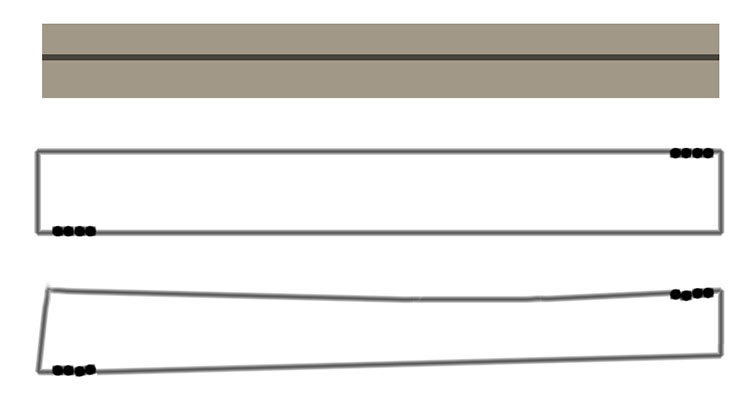The saw arrived this afternoon. It’s just a grip for a hacksaw blade without the extensive framework of an actual hacksaw, exactly what I needed. I traced around the skeg receiver at the specified distance from the stern and then drilled four small holes side by side through the hull along two sides of the outline — just enough space to insert the saw blade — and cut the two long sides of the slot parallel to the keel. I used a chisel to knock out the short sides.
I made a mess as usual and as usual enjoyed at least decent success in cleaning it up. That has become my modus operandi. I ended with a snug, rectangular notch into which the receiver fit well.

Outline of what I meant to drill and cut in the hull.
Pretty much what I actually drilled and cut.
It worked out after judicious whittling. Photos to come!
Please note that wood chisels are not just (or even primarily) an impact tool, though they are also useful in that mode. Sharp chisels are robust knives for whittling and shaping wood with a handheld, irresistible blade. The things I learn from building a boat.
In fact, the skeg receiver eventually fit its new slot too well: I had no room to adjust for slight misalignment with the keel. Sandpaper and a few light passes with a chisel made room for a thin wedge at a forward corner, and that solved that. A very thin temporary wedge made from a stir-stick held the receiver in line and in place [not so temporary, as it happens; when it proved to be well and truly glued in place, I cut it off flush with the outside of the hull and left the shim to do good work]. When the “peanut butter” epoxy holding everything in place cured, I flipped the hull and sealed the inside edges with much more substantial fillets and an overlay of glass. I’ll eventually flip the boat upside down again, sand the receiver down flush with the hull, and apply more glass and epoxy to the wound. There’s no hurry.